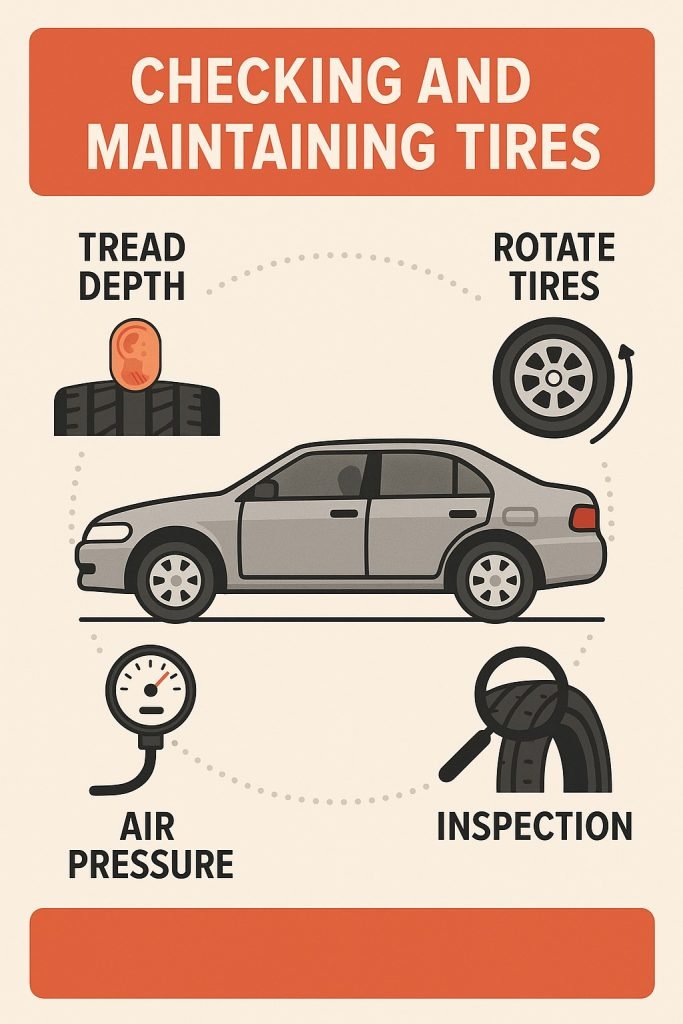
Introduction
Your tires are the only part of your vehicle that touch the road, making them one of the most critical safety features. Worn, damaged, or improperly inflated tires can cause poor handling, reduced fuel efficiency, and even dangerous blowouts. Regular tire checks and maintenance keep your car safe and reliable.
How to Check Tires
-
Tread Depth: Use the “penny test”—insert a penny into the tread with Lincoln’s head down. If you can see all of his head, the tread is too low, and the tire should be replaced.
-
Tire Pressure: Check monthly with a tire gauge. Compare readings to the manufacturer’s recommended PSI (found in the owner’s manual or driver’s door jamb).
-
Visual Inspection: Look for cracks, bulges, cuts, or uneven wear.
-
Alignment and Balance: If the car pulls to one side or the steering wheel vibrates, your tires may need professional alignment or balancing.
How to Maintain Tires
-
Rotate Tires: Every 5,000–7,000 miles to ensure even wear.
-
Keep Tires Properly Inflated: Avoid under- or over-inflation for best safety and fuel economy.
-
Replace When Needed: Don’t wait for a blowout—replace tires with low tread or visible damage.
-
Check the Spare: Don’t forget to inspect and inflate your spare tire regularly.
Why Tire Maintenance Matters
-
Improves traction and braking
-
Prevents dangerous blowouts
-
Increases fuel efficiency
-
Extends tire life, saving money over time
Takeaway
Safe driving starts where the rubber meets the road. Regular tire checks and maintenance are essential to avoid accidents and keep your car running smoothly.
